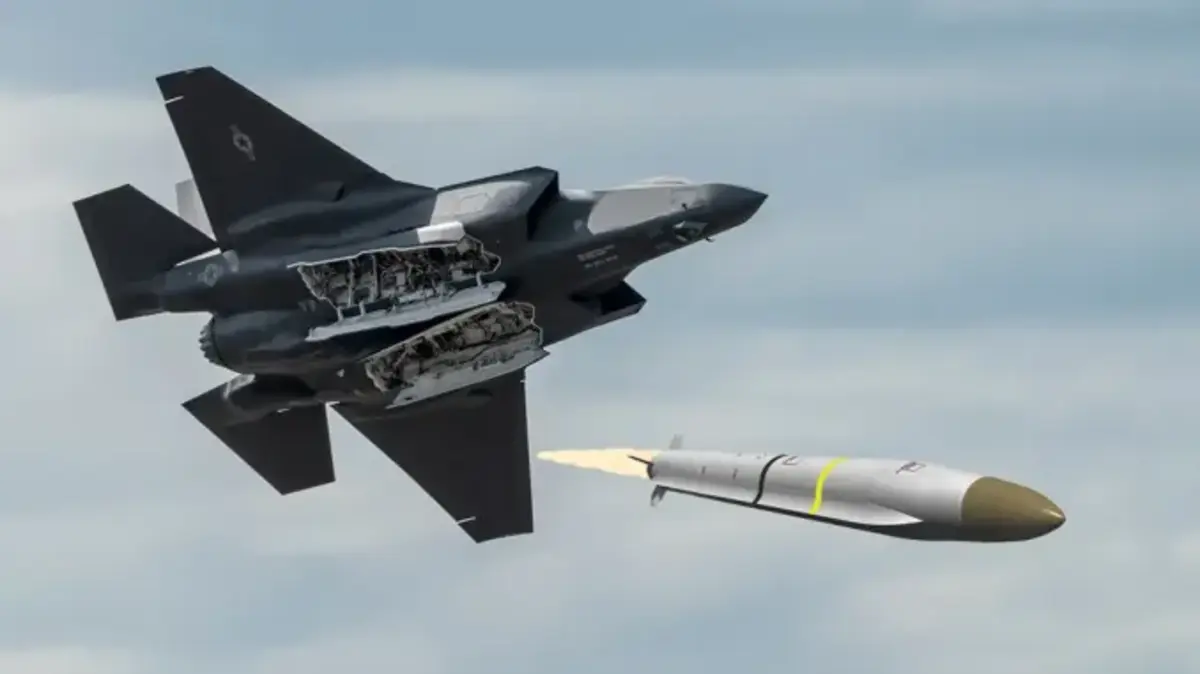The SiAW will first fire from the F-35A as an air-to-ground weapon likely to be capable of paradigm-changing stand-off ranges

By Kris Os𝐛𝐨𝐫𝐧, President, Center for Military Modernization
Attack enemy targets behind or on the side of an aircraft, thwart “jamming” attempts on weapons guidance systems, change course in-flight, reach new ranges, achieve breakthrough guidance precision and potentially even “collaborate” or share data with other weapons in flight … are just a few operational possibilities for the Air Force’s new air-fired Stand-In-Attack-Weapon (SiAW).
The new weapon, now in prototype form, will first fire from the F-35A as an air-to-ground weapon likely to be capable of paradigm-changing stand-off ranges, maneuverability and in-course flight adjustments. The Air Force has just finalized a $700 million deal with Northrop Grumman to further prototype, test and develop the weapon for initial integration on an F-35.
The weapon is slated to arrive in 2026.
“SiAW is an air-to-ground weapon that will provide strike capability to defeat rapidly relocatable targets as part of an enemy’s anti-access/area denial environment,” a Northrop Statement says.
While little detail is available, it is not surprising that paradigm-changing enhancements are introduced through software, as the F-35 has for years improved its weapons envelope through the creation of new interfaces, standards and software enhancement integrated through specific increments or “drops.” Now, software upgrades to weapons are more continuous and done as new applications emerge, something which greatly expedites the modernization process. For instance, previous software drops for the F-35 have enabled the aircraft to integrate the Stormbreaker, a precision-guided weapon capable of changing course in flight at ranges out to 40-nautical miles using a two-way datalink and tri-mode seeker technology using infrared RF tracking, laser targeting and millimeter wave sensing.
SiAW was built with extensive digital engineering, a cutting edge method of weapons development using computer simulations, modeling and advanced algorithms. The method has been used already to great success with the Air Force’s Next Generation Air Dominance platform and new ICBM called the Sentinel. Advanced computing with simulations and a new generation of algorithms enables weapons developers to examine design models and specific key performance parameters for emerging weapons systems. What this means is that developers can analyze and assess a variety of different designs before any prototypes are actually built. It may seem surprising to some, however advanced computer simulations have advanced to rapidly and to such an extent that digital engineering methods and computer modeling are able to very precisely replicate design specifics and weapons performance parameters against expected threats. Digital engineering also enables rapid upgrading and as-needed software modifications, something Northrop Developers called MOSA, for Modular Open Systems Architecture. This makes sense as the intent is likely to not only incorporate the best available explosives, guidance technology, hardening and range capacity but also engineer a weapon which can continuously upgrade as new technology emerges.





